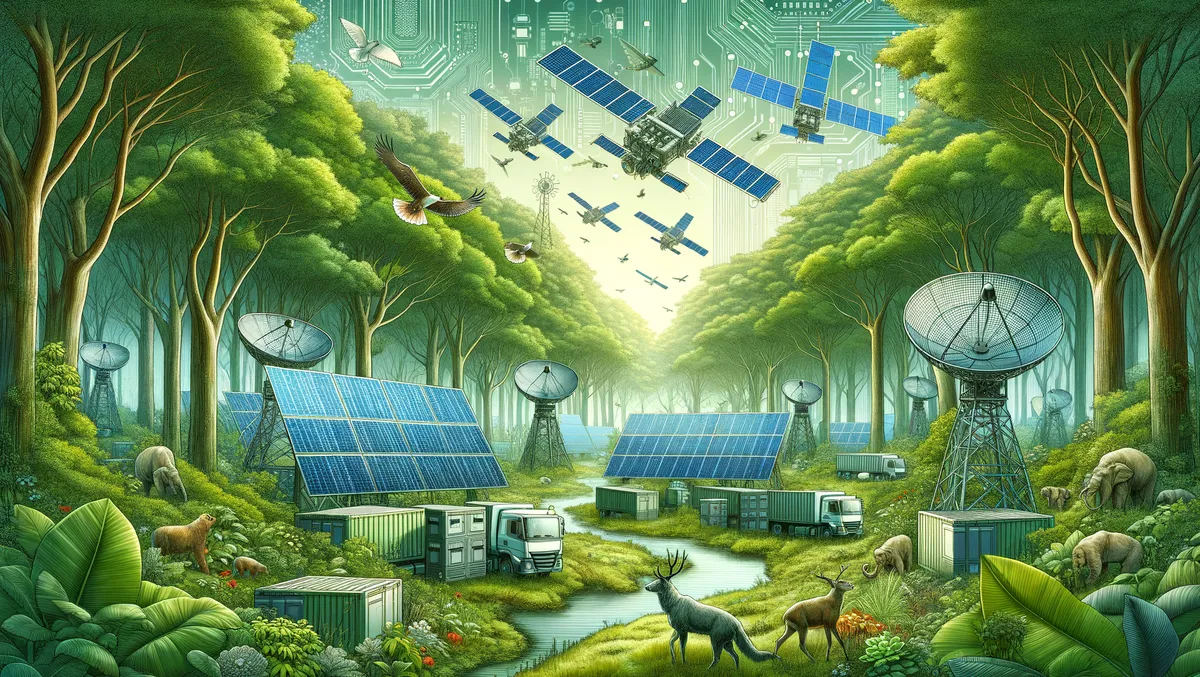
Satellite IoT emerges as key player in global environmental sustainability
Amidst the ongoing global environmental crisis, the Internet of Things (IoT) may hold a solution, acting as a catalyst for sustainable development. Satellite IoT, which permits communication with very remote assets and sensors, has remarkable potential for monitoring, managing, and mitigating environmental issues, according to Alastair MacLeod, CEO of remote connectivity provider Ground Control.
MacLeod's view aligns with the World Economic Forum's IoT Guidelines for Sustainability report, which states that 84% of IoT deployments either address or have the potential to contribute to the UN's Sustainable Development Goals. The capacity of Satellite IoT to collect and transmit data even in remote locations can play a significant role in reshaping global sustainability initiatives. Utilising real-time data, Satellite IoT can address environmental issues and facilitate sustainable practices.
Satellite IoT has already demonstrated its potential in wildlife conservation and environmental monitoring. Using Long Range Wide Area Network (LoRaWAN) multiplies sensors across a wide area, allowing data to be aggregated in a gateway, which is then transmitted over the satellite. The key advantage of LoRaWAN is its ability to cover extensive areas with minimal infrastructure requirements. Contrasting with traditional cellular networks that can struggle in challenging terrains, LoRaWAN excels, spanning hundreds of square kilometres with a single base station or gateway.
MacLeod also mentioned the "Digitalisation of forest," an initiative aimed at integrating cutting-edge technologies into forest environments to improve monitoring, data acquisition, and research and development. Satellite-enabled sensors can detect signs of deforestation, monitor wildlife movement, and measure carbon dioxide levels, proving invaluable to environmental agencies and policymakers.
Satellite IoT is also making significant contributions to precision farming and smart agriculture, by optimising resource usage and reducing environmental impact. The Association of Equipment Manufacturers estimates that, with 90% adoption, precision agriculture could lead to substantial environmental benefits. However, connectivity issues, particularly in remote farm areas, continue to be a hindrance to widespread adoption. Satellite IoT is thus crucial in areas lacking traditional, cellular connectivity.
For example, Synnefa facilitates remote farming for smallholders in rural Kenya by providing reliable and efficient data, leading to educated decisions about irrigation or fertilisation. Farmers using Synnefa's smart sensors have reported water savings of over 50%, reduced fertiliser application by 41%, and increased production by 30%.
Satellite IoT also aids in mitigating climate change by providing crucial data for monitoring environmental changes. Additionally, it plays a role in disaster management, strengthening early warning systems and improving response capabilities. Real-time data delivered by satellite-enabled sensors can be invaluable for emergency responders.
Despite the promising potential, persistent challenges such as data security and high implementation costs need addressing. Continuous advancements in satellite technology could pave the way for overcoming these obstacles and further enhance the role of Satellite IoT in environmental sustainability.
As technology progresses, Satellite IoT is set to play an increasingly significant role in promoting a sustainable relationship between human activities and the environment, based on real-time data gathered and transmitted even in the remotest locations.


